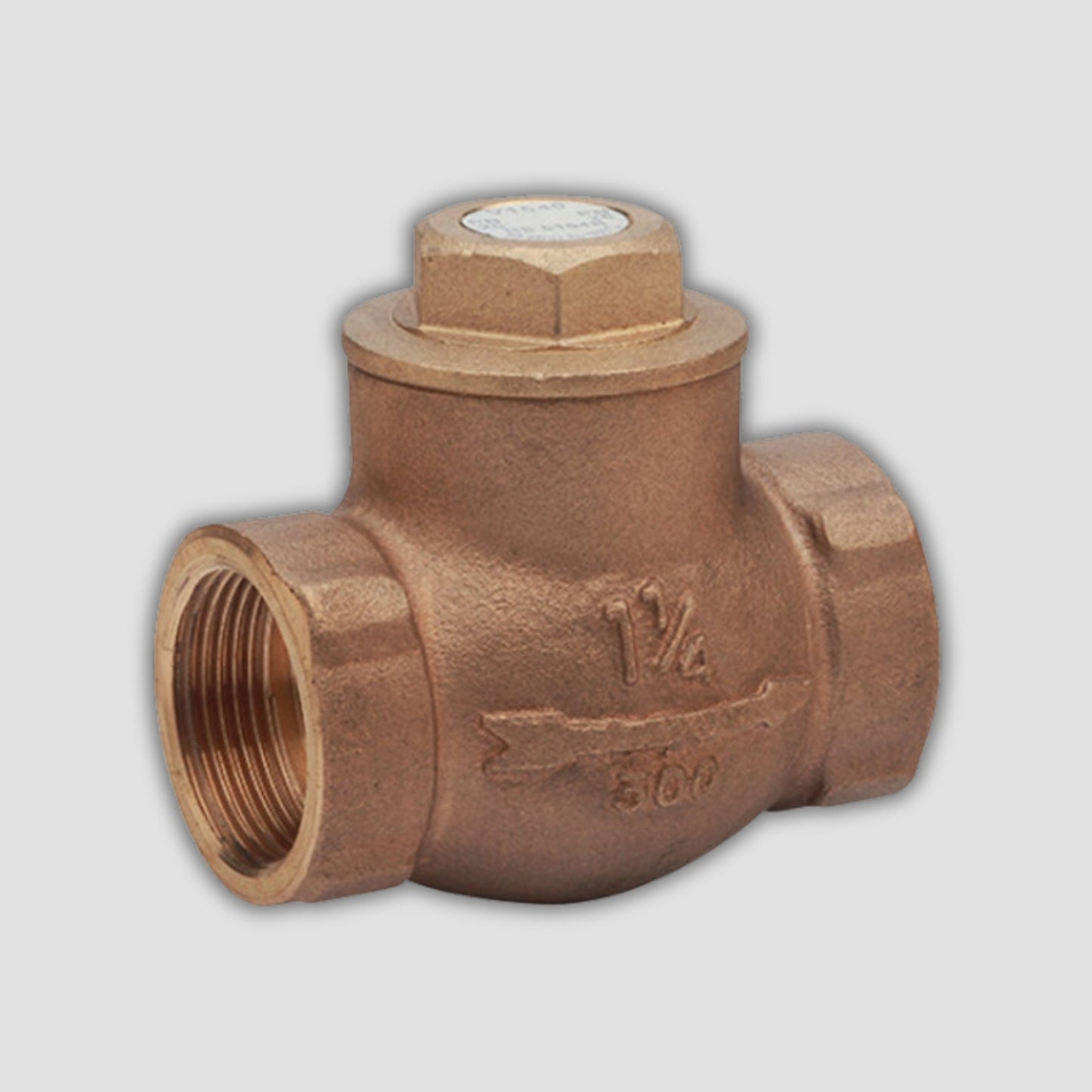Bronze Valves
Bronze Swing Check Valve – PN25
Bronze Swing Check Valve – PN25
Couldn't load pickup availability
The Bronze Swing Check Valve – PN25 is designed to prevent reverse flow in pipelines, ensuring system integrity and protecting pumps and equipment from potential damage. With a PN25 pressure rating, it is suitable for high-pressure systems carrying water, steam, air, or other non-aggressive fluids.
Featuring a swing-type disc, the valve opens with forward flow and closes automatically when flow reverses, offering low pressure drop and quiet operation. Constructed from high-quality bronze, it delivers long-lasting corrosion resistance, making it ideal for marine, HVAC, and industrial applications.
Key Features:
- PN25 pressure rating (25 bar max)
- Swing-type disc for reliable backflow prevention
- Bronze body for excellent corrosion resistance
- Suitable for water, steam, air, and non-corrosive fluids
- Horizontal installation preferred
- Ideal for marine, heating, and industrial systems
Share

FAQ's
What is the difference between a valve and an actuator?
What types of actuators are available?
The main types of actuators are:
Pneumatic actuators – use compressed air for fast, reliable operation.
Electric actuators – use electrical power for precise control.
Hydraulic actuators – use fluid pressure for high-torque applications.
Each type offers unique advantages depending on the environment, media, and system control needs.
How do I choose the right actuator for my valve?
To select the correct actuator, consider:
Valve type and torque requirement
Power source available (air, electric, or hydraulic)
Operating environment (temperature, humidity, hazardous area)
Control signal type (on/off or modulating)
Matching actuator torque and compatibility with the valve’s ISO mounting ensures reliable performance.
What are the main types of valves used in automation?
The most common valves in automated systems include:
Ball valves – for tight shutoff and quick operation.
Butterfly valves – for larger flow control with compact design.
Globe valves – for precise throttling and flow regulation.
Check valves – to prevent backflow.
Gate valves – for full bore flow isolation.
What’s the difference between a double-acting and spring-return actuator?
Double-acting actuators use air (or power) to both open and close the valve.
Spring-return actuators use air to open (or close) the valve, and a built-in spring to automatically return it to a safe position when power or air is lost — ideal for fail-safe operation.
How often should valves and actuators be serviced?
Regular maintenance intervals depend on operating conditions, but a good rule of thumb is to inspect every 6–12 months.
This includes checking for leaks, lubrication, seal wear, and actuator responsiveness to prevent unexpected downtime.

